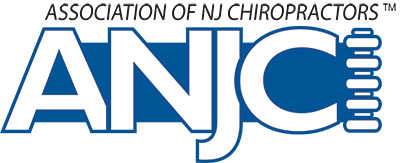By Jeffrey Randolph, Esq., ANJC General Counsel
This article is Volume 3 in a multi-part series discussing chiropractic malpractice cases in New Jersey. Volume 1 provided a general overview. Volume 2 addressed the first element of a chiropractic malpractice/negligence case: breach of duty/standard of care. This article will address the next element a malpractice plaintiff must establish—whether a breach of the standard of care proximately caused injury to the patient.
We again start our analysis with the standard Model Civil Jury Charges on Proximate Cause. This is the law that is actually read to a jury in New Jersey after the parties have completed closing arguments and the jury is getting ready to deliberate. There are multiple jury charges on Proximate Cause in New Jersey and the attorneys and judge will determine at what is called a “charge conference” after closing arguments which jury charges will be read to the jury.
There are multiple Proximate Cause jury charges based upon the facts of the specific case. First, there is a standard proximate cause charge where there are no pre-existing conditions or intervening causes. Under this standard, the plaintiff must establish through evidence at trial that the patient’s injury “is so connected with the negligent actions or inactions of the doctor that it is reasonable to hold the doctor wholly or partially responsible for the injury.” (NJ Model Jury Charge 6.10).
There is a separate jury charge where the patient has a pre-existing condition such as long-standing degeneration of the spine. In these circumstances, the plaintiff must establish through evidence at trial that: (1) the breach of standard of care increased the risk of harm posed by the pre-existing condition, and (2) that the increased risk was a substantial factor in causing the plaintiff’s ultimate injury. If the plaintiff proves this by a preponderance of the evidence, the doctor is responsible for all of plaintiff’s injuries unless the defendant can prove what portion of plaintiff’s injuries were the result of the pre-existing condition. (NJ Model Jury Charge 5.50(e)).
To further muddy the waters, there are Proximate Cause jury charges where there are concurrent causes of harm. An example of this is a case where a patient was injured in a motor vehicle accident and went to see a chiropractor that they allege caused further harm through their treatment. In this situation, the patient must establish at trial that the negligence of the doctor was a “substantial factor in bringing about the injury” that occurred and that some harm to the patient “was foreseeable” from the doctor’s negligence. (NJ Model Jury Charge 6.13).
Finally, there is yet another Proximate Cause charge where there is an intervening cause of injury. An example of this would be a claim by a patient that they were injured by a chiropractor and the next day fell down a flight of stairs. The slip and fall would be a potential intervening cause of injury. Under this scenario, the patient must establish through evidence at trial whether the alleged intervening cause was an intervening cause that destroyed the substantial causal connection between the defendant’s negligent actions (or omissions) and the injury. If it did, then the doctor’s negligence was not a proximate cause of the injury. (NJ Model Jury Charge 6.14).
As the reader can see, the right Proximate Cause charge to be read to the jury is very fact-specific and there can be significant argument by the attorneys at the charge conference as to which charge is appropriate to read to the jury. The trial judge will hear arguments from both counsel at the charge conference and based upon that and the judge’s own recollection of the evidence submitted into the court record at trial will determine the appropriate charge to read to the jury.
Stay tuned for the next installment in Volume 4 where proof and categories of damages will be discussed.
The author of Legal Ease and Legal Q&A (Jeffrey Randolph, Esq.) is an independent person of the ANJC, and his views are not authorized, sponsored, or otherwise approved by the A.N.J.C. The information provided is for general guidance on matters of interest only and may not take into account particular facts relevant to your individual situation.
The application and impact of laws and health care can vary widely based on the specific facts involved. Given the changing nature of laws, rules, and regulations, there may be omissions or inaccuracies in information contained in these materials.
Accordingly, the information you receive is provided with the understanding that the author and the A.N.J.C. are not herein engaged in rendering legal, accounting, tax, health care, or other professional advice and services, nor are they providing specific advice with regard to your practice, the treatment of any specific illness, disease, deformity, or condition, or any other matter that affects trade, commerce, or legal rights of others.
As such, this article should not be used as a substitute for consultation with professional accounting, tax, legal, health care, or other competent advisers. Before making any decision or taking any action, you should consult an appropriately trained professional.


0 Comments